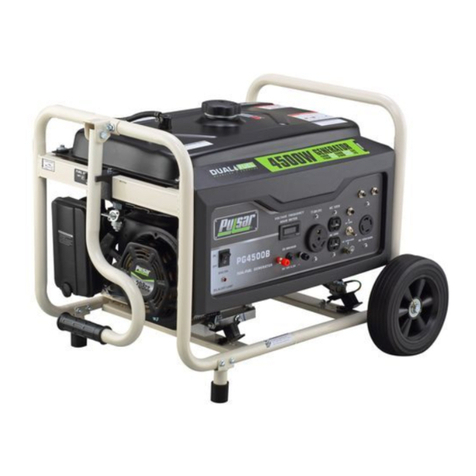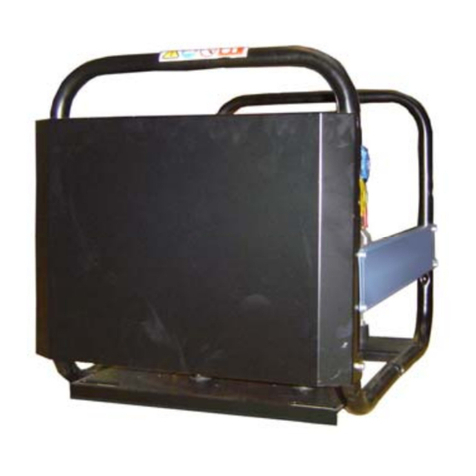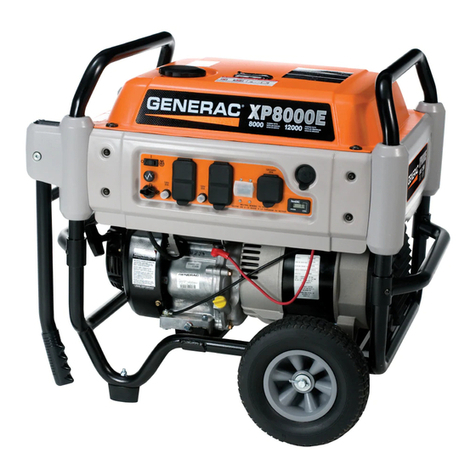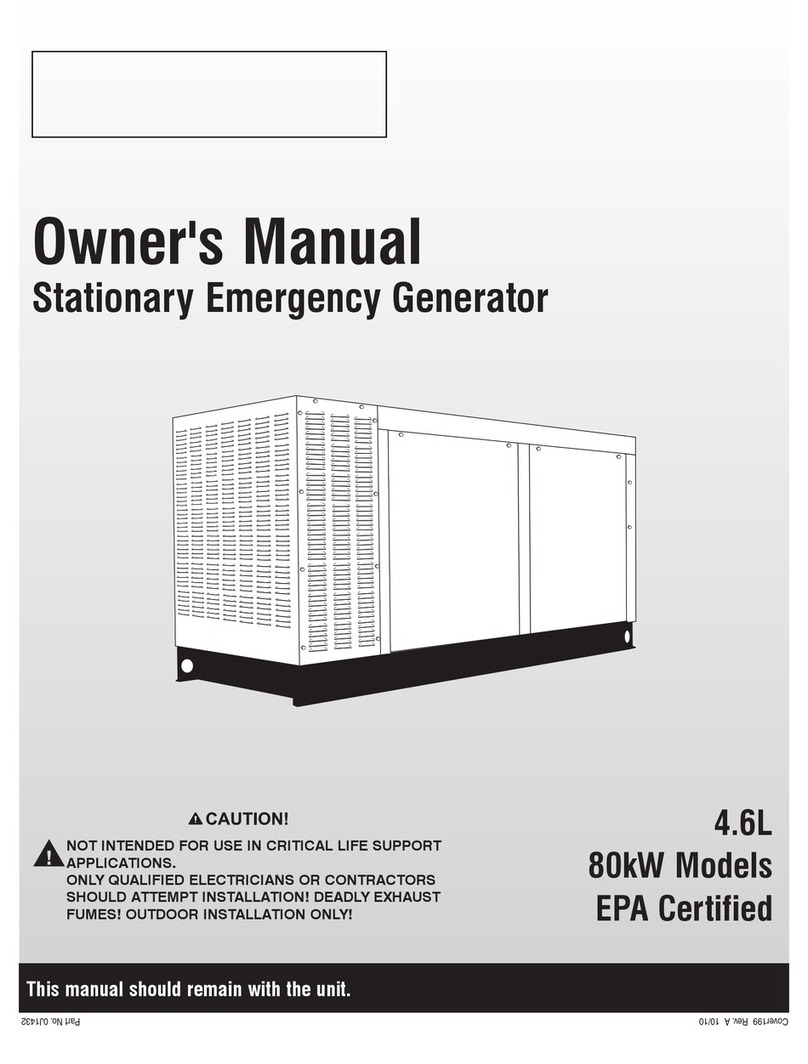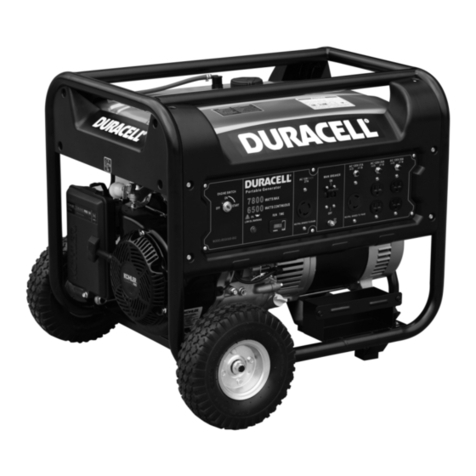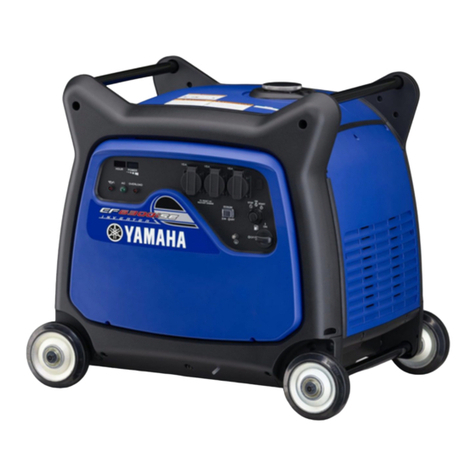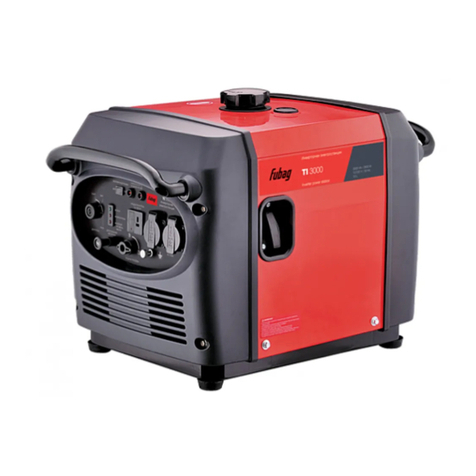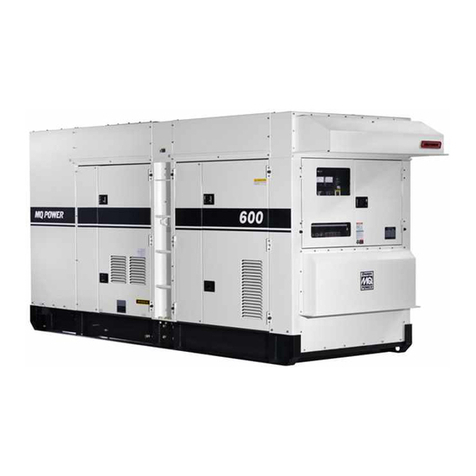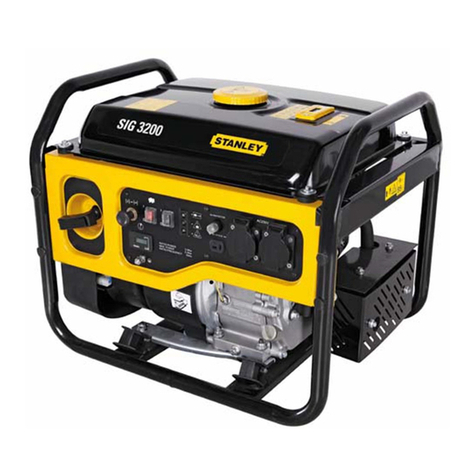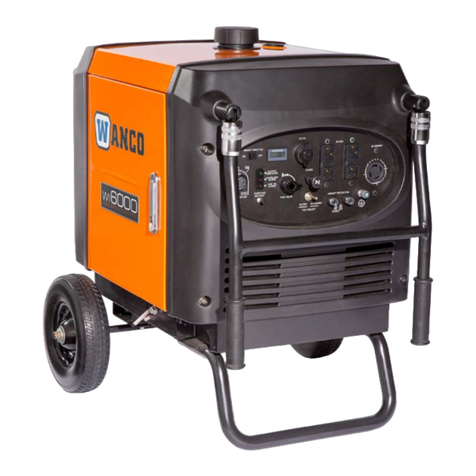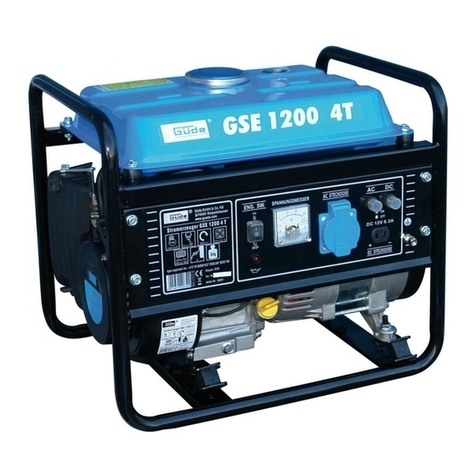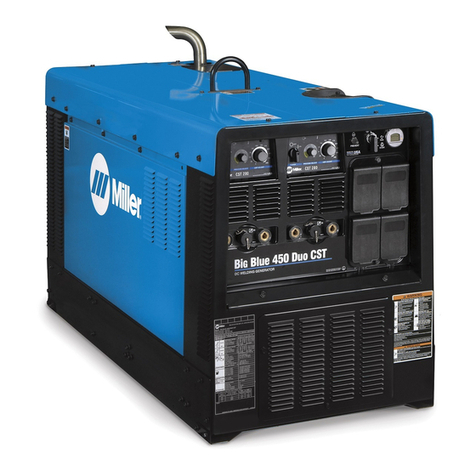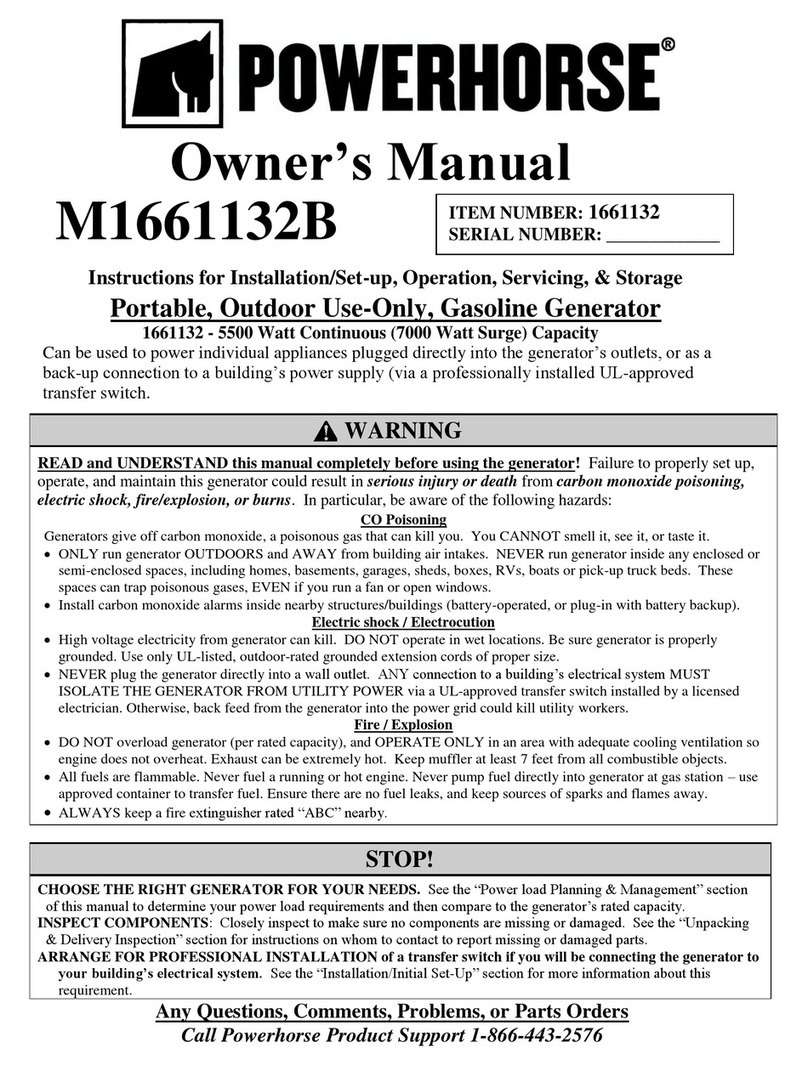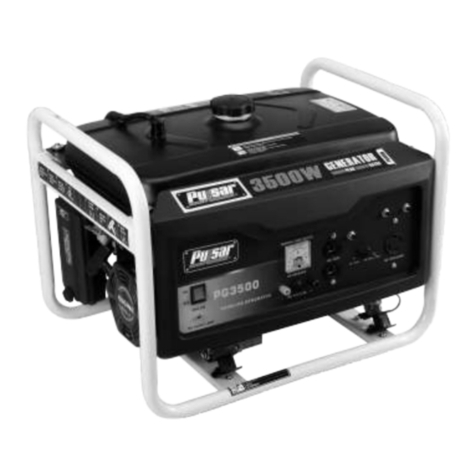
INSTALLATION
8Copyright © 2008 Mastervolt / October 2008 / WHISPER 12/16 ULTRA - Three Phase / EN
2 FUEL LIFT PUMP
The generating set itself is equipped with a fuel lift pump;
therefore the tank can be installed at a lower level than the
generating set. See figure 6. The maximum suction height
is 1 m. The Whisper 16 ULTRA has a mechanical fuel lift
pump that should be primed manually when the first time
used.
If the pump has to lift the fuel higher than one meter an
external fuel lift pump must be installed. The control board
is already prepared to connect an extra fuel pump.
3 FUEL PIPES
When the tank is above the generating set we recommend
ending the return line on the top of the tank.
When the return is on the top - in case of a leakage the
return line cannot overflow because of siphoning. One will
only need a fuel cock in the fuel supply line. When the tank
is below the generating set we recommend ending the
return line on the bottom of the tank (A) below the inlet of
the supply line.
Both supply and return fuel pipe lines should be
appropriate material and 8 mm outer diameter tubing. The
quality of the tubing of fuel pipes could be submitted to
local regulations depending on the application of the
vessel.
The fuel pipes can be plumbed to the flexible hoses which
are on the generating set and have a connection to fit to 8
mm pipe. This fuel lines fulfils CE standards and are
according to ISO 7840 A2.
It is important to avoid bends in the pipes, as they could
trap air bubbles. The return pipe should never be
connected to the suction pipe. Other consumers of diesel
fuel, such as the propulsion engine and heaters, have to
be connected to separate suction and return pipes
4 FUEL FILTERS
A fine fuel filter is installed which requires maintenance.
Mastervolt advises to install an extra fuel filter/ water fuel
separator near the fuel tank.
Before starting your generating set for the first time follow
the fuel system bleeding procedure in the users manual.
1.5.2 Cooling
Intercooling is based on a raw water pump, heat
exchanger and water-injected exhaust. Cooling liquid in
the internal cooling system is cooled in a heatexchanger
by outboard water (raw water or seawater). After the raw
water is warmed up in the heatexchanger it is dumped
overboard by injecting it in the exhaust.
The generating set should have its own sea water (coolant
water) inlet and should not be connected to any other
engine systems. A properly installed cooling system is
critical to keep engine temperatures within an acceptable
range. Ensure that the installation complies to the
following installation instructions.
1 THE INTERNAL COOLING SYSTEM
The internal cooling system should be filled with cooling
liquid. (Refer to the users manual 2.5.12) When the engine
becomes hot the liquid expands and the system is
pressurised. After the pressure becomes too high the
release valve in the filling cap on the manifold opens and
the expanding liquid is pressed into the expansion tank
that is in the delivery. Also the air in the system that is
collected at the top of the manifold is released in this way.
When the liquid cools down there will be under-pressure.
Another valve opens and the liquid is sucked into the
manifold again. This system works only when there is
enough liquid initially. This has to be checked when
commissioning the generator set. By filling up the
expansion tank when necessary there will always be
enough liquid in the system. The hose that is in the
delivery has to be connected to the connection on the side
of the filling cap. This hose is made of heat resistant
plastic and is not sensitive for kinks.
The hose goes through a hole that has to be drilled in the
lower part of the canopy close to the place where the tank
is mounted.
MAX.
Fig.7: Expansion tank placement
The tank has to be placed close to the generator. When it
is mounted above the top of the manifold the liquid in the
